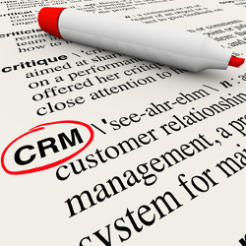Ivan Wainewright says that a successful database implementation is about much more than choosing a great CRM system.
If you are thinking about buying a new database, then it is highly likely that you have been told about the “new” CRM systems such as Salesforce or Microsoft Dynamics CRM. And if so, then you may have also been told that they are great because they are “in the cloud”, have better integration than other systems, or are much cheaper.
All of those things might be true, and it could well be that they are the right system for you. However, it sometimes seems to me that organisations buy such systems blindly, believing the hype and without considering other options or what the fundamentals are when implementing them.
Now don’t get me wrong – I like Salesforce and Dynamics, and I think they are both excellent systems. But I also like “traditional” fundraising databases such as Raiser’s Edge, thankQ and others. And I worry that sometimes we are promoting style over substance. After all, there is no point buying any database if it can’t do what you want; say, direct debit management, gift aid, income processing or sophisticated communication preferences.
Catalyst for change
Perhaps the most significant improvement you can make in any CRM implementation – new or existing – is reviewing your business processes. I truly believe that a new database should be a catalyst for change. It doesn’t matter what has gone before; now you have the opportunity to revisit what you do and ask why you do it.
In my experience, when you ask yourself why you have your current process, it is likely that the answer will fall into one of three categories:
- Er, dunno, we’ve just always done it that way… I was trained by my predecessor;
- Because our existing computer system makes us do it this way;
- We analysed our requirements and it really is the best way of doing the process.
Sadly, answer three is rare and the first two are the most likely. So this means, even during procurement, that we can challenge such issues and ask what it is we are really trying to achieve.
A lot of the time, we simply need to review the process when we start implementation, but some of the time you will find that problems are even more deep-rooted than that. If so, we have the chance to take a completely different look at what we are doing, which could impact the procurement in all sorts of ways: the approach to take, the software modules you need, the people to deploy or even the software requirements themselves.
Integration home truths
Please also be aware that anyone (a salesperson maybe?!) who tells you that their system makes data integration easy is, well, stretching the truth at best and painting a rather utopian picture at worst. Yes, the better CRM systems have good integration capabilities, yes there are some very good third-party apps which can “integrate” with them, and yes, some of them are indeed easier than others – email-marketing systems being a good example.
But if you want to automate and simplify your data feeds from JustGiving, your fulfilment house, phone agencies, those other databases you have in your regional office, or those databases which your volunteer created, then don’t think they are going to be integrated overnight. API (application program interface) tools are wonderful but they can be expensive, complex, lengthy to develop and hard to change once implemented.
It is just as much about the business rules behind any integration as it is the technology (eg how should we identify dupes on import, do we need to add extra data, does the data in our various databases mean the same thing). Equally, although a good database system can help you integrate your fundraising/membership data with your finance system, it is (again) as much about the processes and reconciliation requirements as it is about the software tools.
So if you are thinking of buying a new database, ensure you are led by your business requirements, your key project drivers and your underlying goals. Some of that will of course be the technology – it’s just not the be-all-and-end-all.
Ivan Wainewright is an independent database/CRM consultant and project manager.








